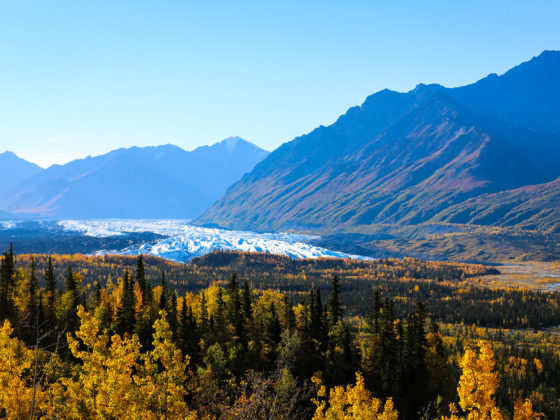[Editor’s note: Justin visited the Matanuska-Susitna Valley — a region covering 23,000 square miles of Alaskan wilderness — this past summer as a guest of Mat-Su Valley. He was met and shown around personally by Casey Ressler, whose tour included a day at the Alaska State Fair, glacier hiking, and a flightseeing trip around Mt. Denali, among other activities.]
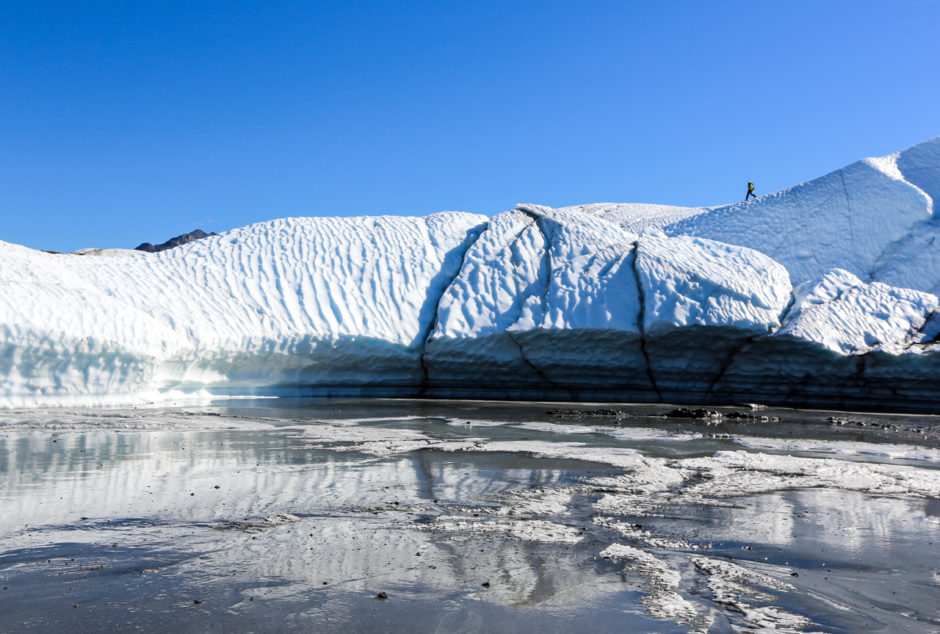
Ice climber
Trekking, ice climbing, and just plain chilling (pun intended) are all enjoyed on the Matanuska Glacier. Being just 30 minutes from Palmer, AK makes this glacier very accessible and easily done in a half day.
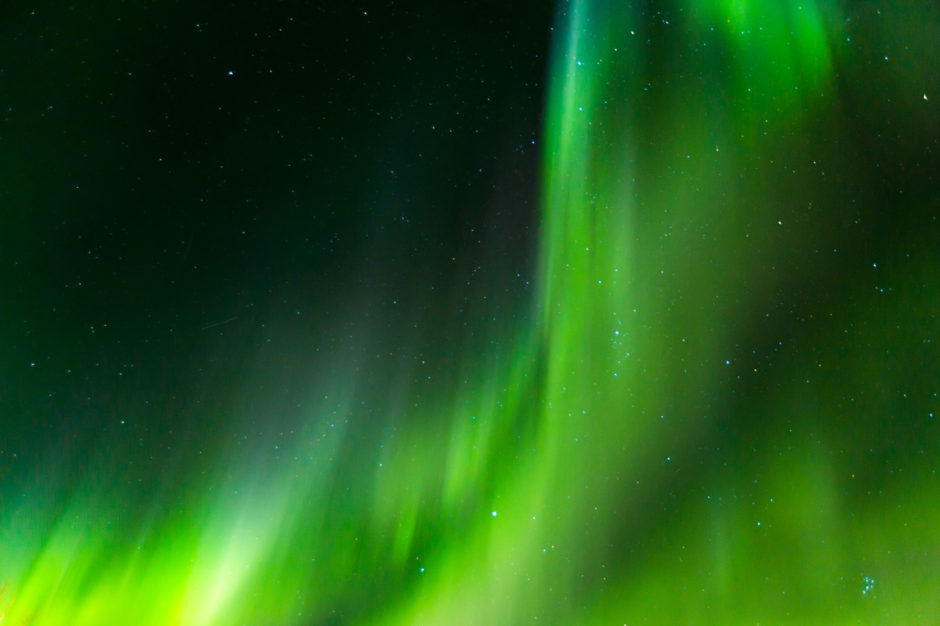
Northern lights (Aurora Borealis)
The northern lights showing their splendor as the solar winds rise in the magnetosphere. These lights are a result of electrons colliding with the upper atmosphere. They follow the magnetic field of the earth down to the polar regions then collide with oxygen and nitrogen and other molecules in the atmosphere, transferring their energy and thus exciting the atoms and molecules.

The tallest mountain in North America
Rising to about 20,310 feet, and growing at a rate of 1 millimeter per year, Denali, which translates to “High One” in the native Athabaskan language, is the tallest mountain in North America. It formed about 56 million years ago and is made up of mostly granite.
Intermission
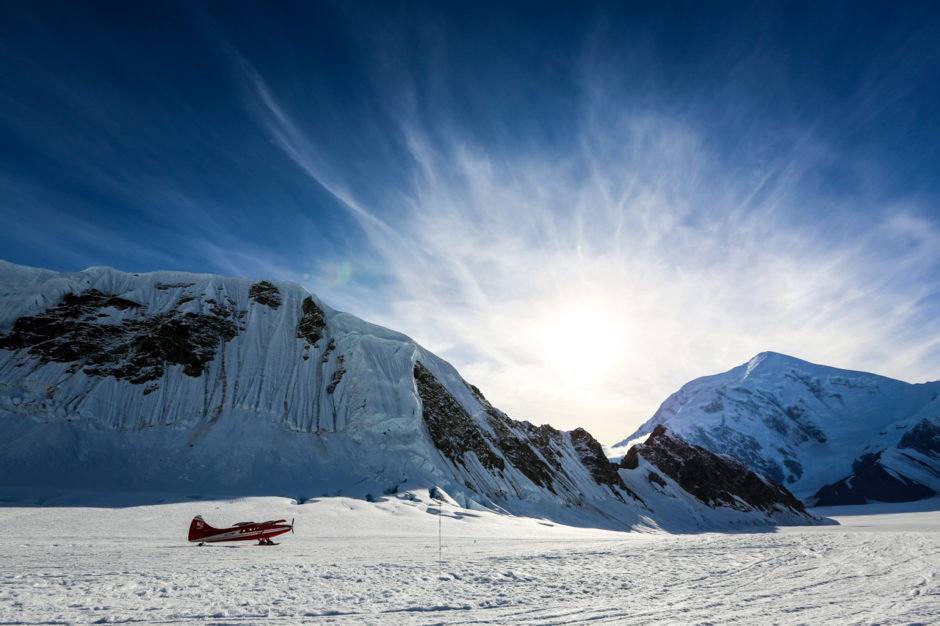
Perspective
The plane sits on a glacier at about 7200 feet above sea level on the Southeast fork of the Kahiltna Glacier. Daily flights from Talkeetna make this scenic landing very accessible.

Alaskan mountain range
Alaska is incredibly mountainous. This was shot on the Glen Highway about 1.5 hours from Anchorage.

Homesteaders' tractors
Tractors from a not-so distant past where homesteaders from the Midwest were encouraged to move to Palmer in the 1900s and cultivate 40 acres of land. The land was gifted to them as long as they could show “improvements” to the land over a four year period.
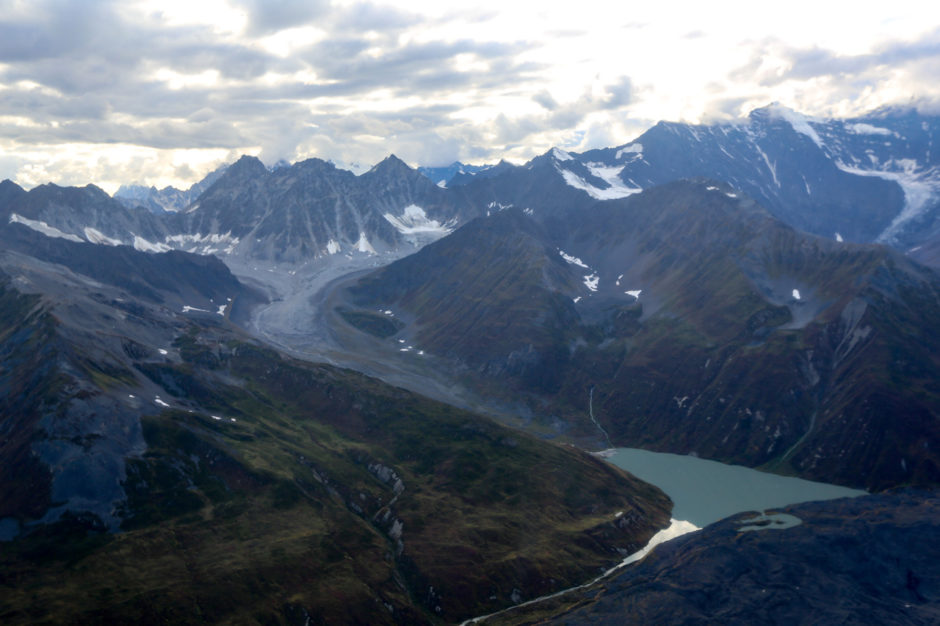
Milky water from the silt content
Also known as glacial flour, these tranquil pools form as glaciers melt in Denali National Park. A glacier can flow at rates ranging from several feet per year to several feet per day.
Intermission
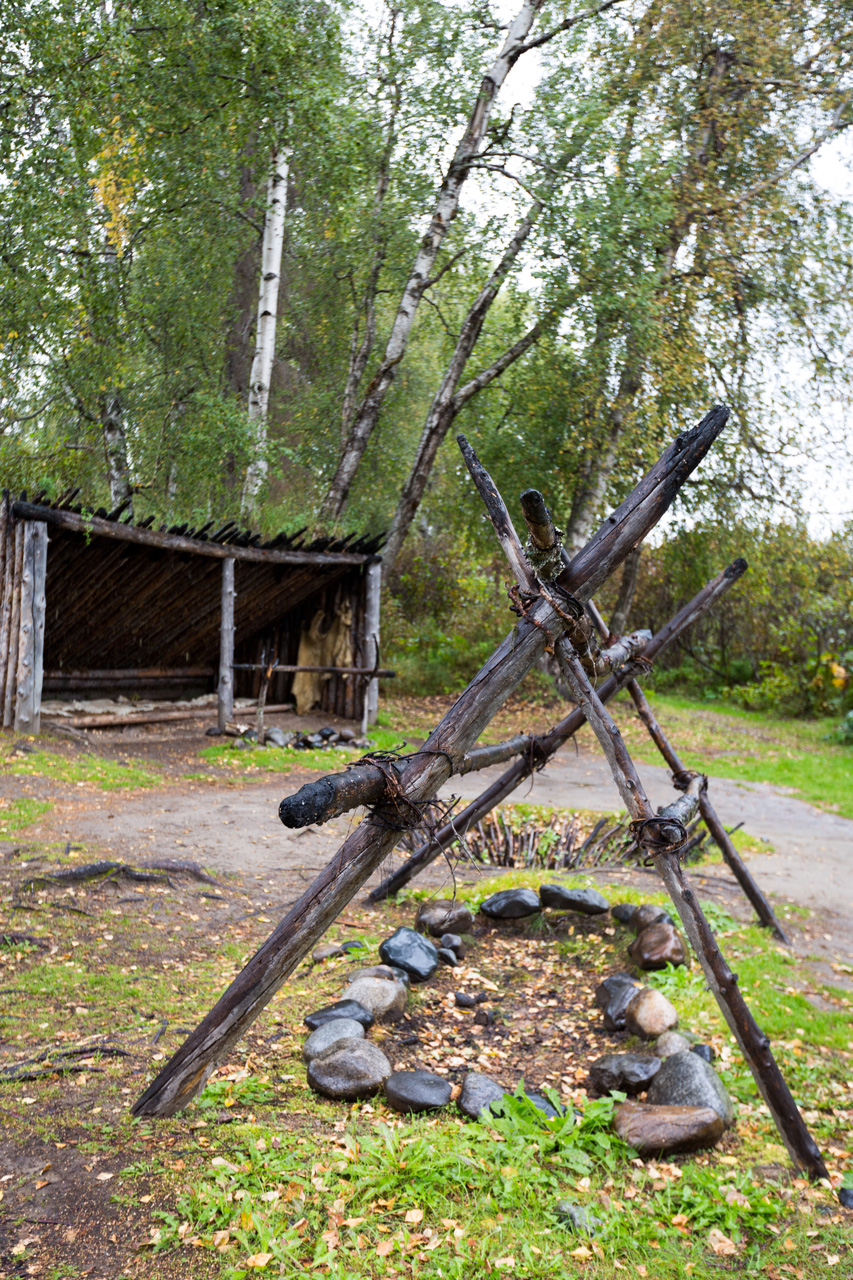
A traditional Athabaskan (Alaska Native) camp
The foreground stick contraption was used to smoke (preserve) the day’s catch. The hut in the background was where the Athabaskans found respite from weather. As nomadic peoples, these camps were all that was needed while they were in an area for just a short stint.
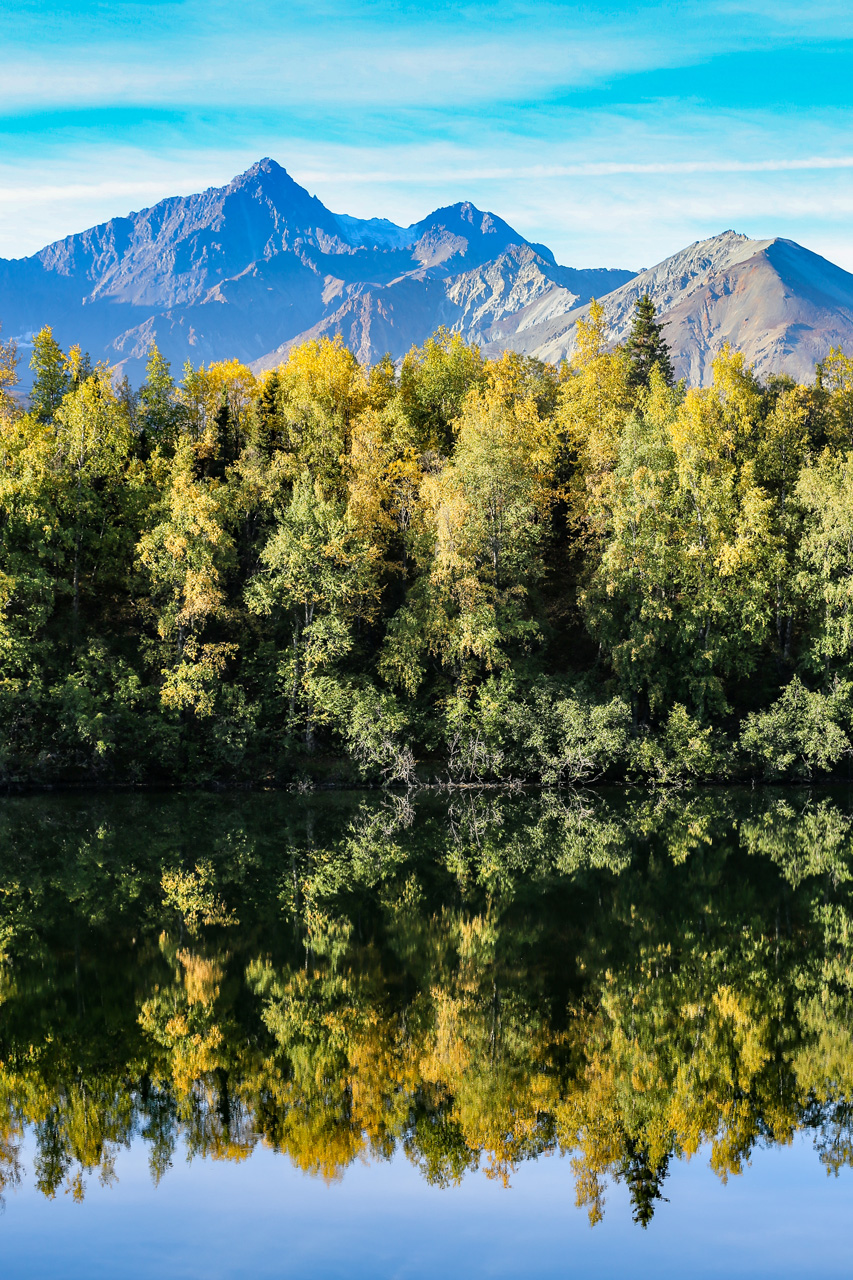
Rest stop
One of the many scenic pull offs on the Glen highway from Palmer to the Matanuska Glacier. Autumn starts in the late summer in these parts. This is within a two hour drive of Anchorage.
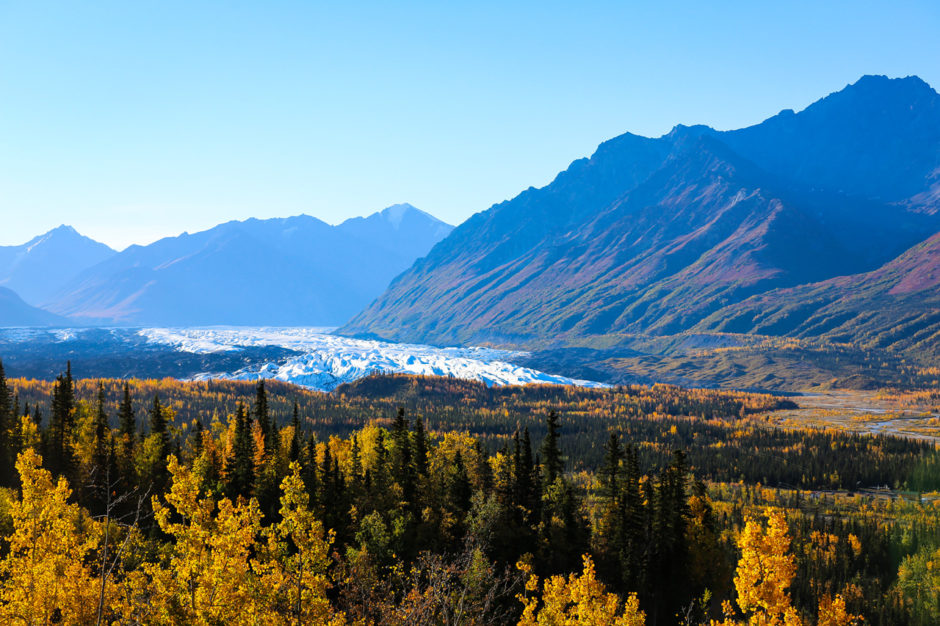
Matanuska Glacier
A view of the Matanuska Glacier looking Southeast. This is one end of the 26 mile long and 4 mile wide “valley” glacier, meaning a body of solid ice flowing like a river under its own weight through an existing valley.
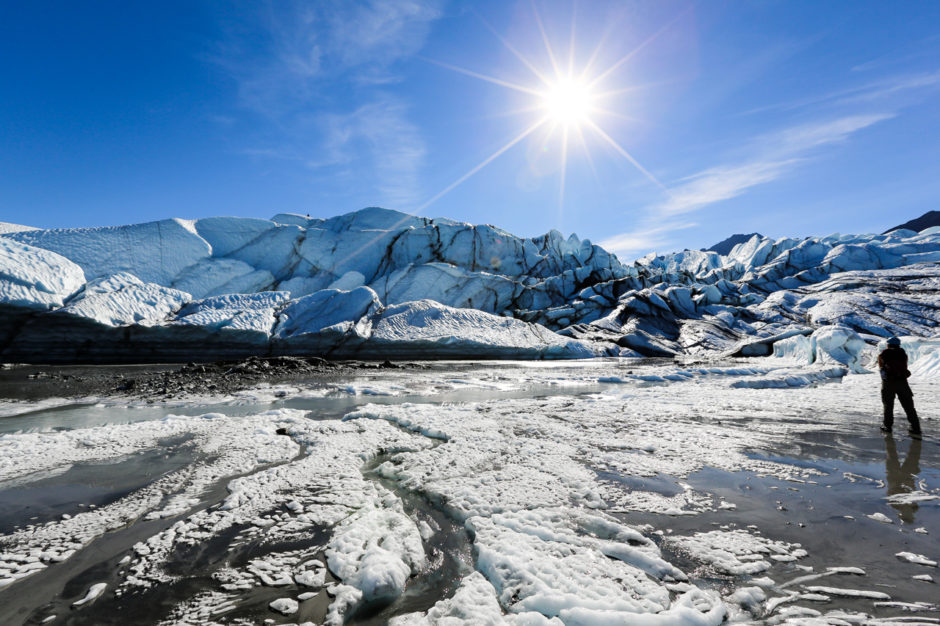
Glacier trekking
The Matanuska Glacier is an impressive 26 miles long, 4 miles wide, and 1 mile deep at its thickest. Trekking on the the glacier on any day is enjoyable, but pick a sunny warm day in the summer and you will be out there in shorts.
Intermission
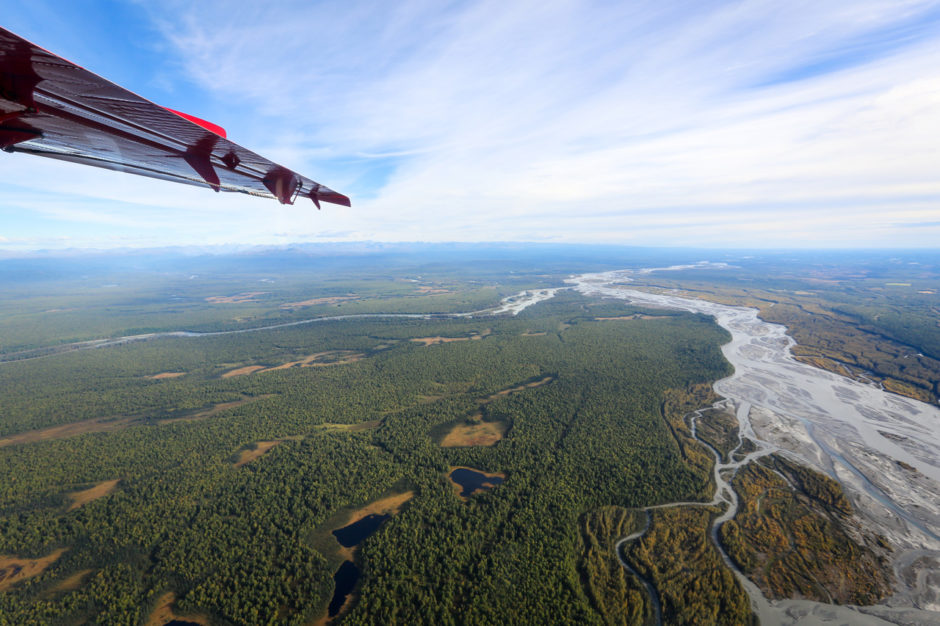
Denali National Park From the plane
Denali National Park is a vast stretch of wilderness with 6 million acres protected. Within the park you can find moose, caribou, grizzly bears, wolves, and the wood frog -- famous for freezing solid during the winter. It's only two hours from Anchorage and 30 minutes from the lovely town of Talkeetna (population 900).
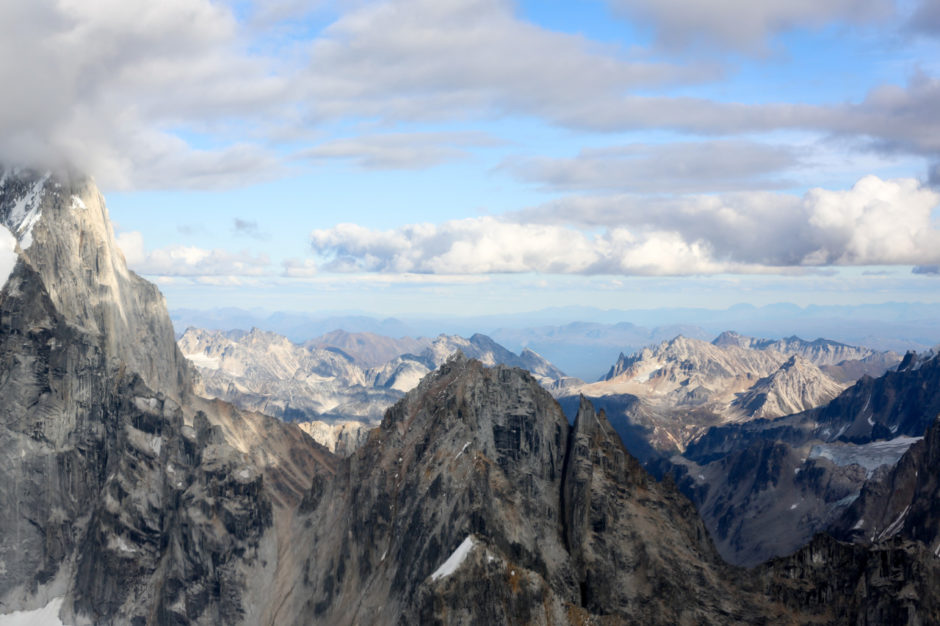
The Alaska Range
The Alaska Range in Alaska's south-central region is about 400 miles long and home to the tallest mountain in North America, Denali.

Fall colors on the Matanuska Glacier in late summer
Glaciers cover roughly one million acres -- one-sixth of Denali National Park. Carrying hundreds of thousands of tons of ice every year, glaciers flow away from mountains and carve deep valleys.

Glacier
The glacier -- part of the 229 acre Matanuska Glacier State Recreation Area -- sits in between the cities of Palmer and Glennallen.
